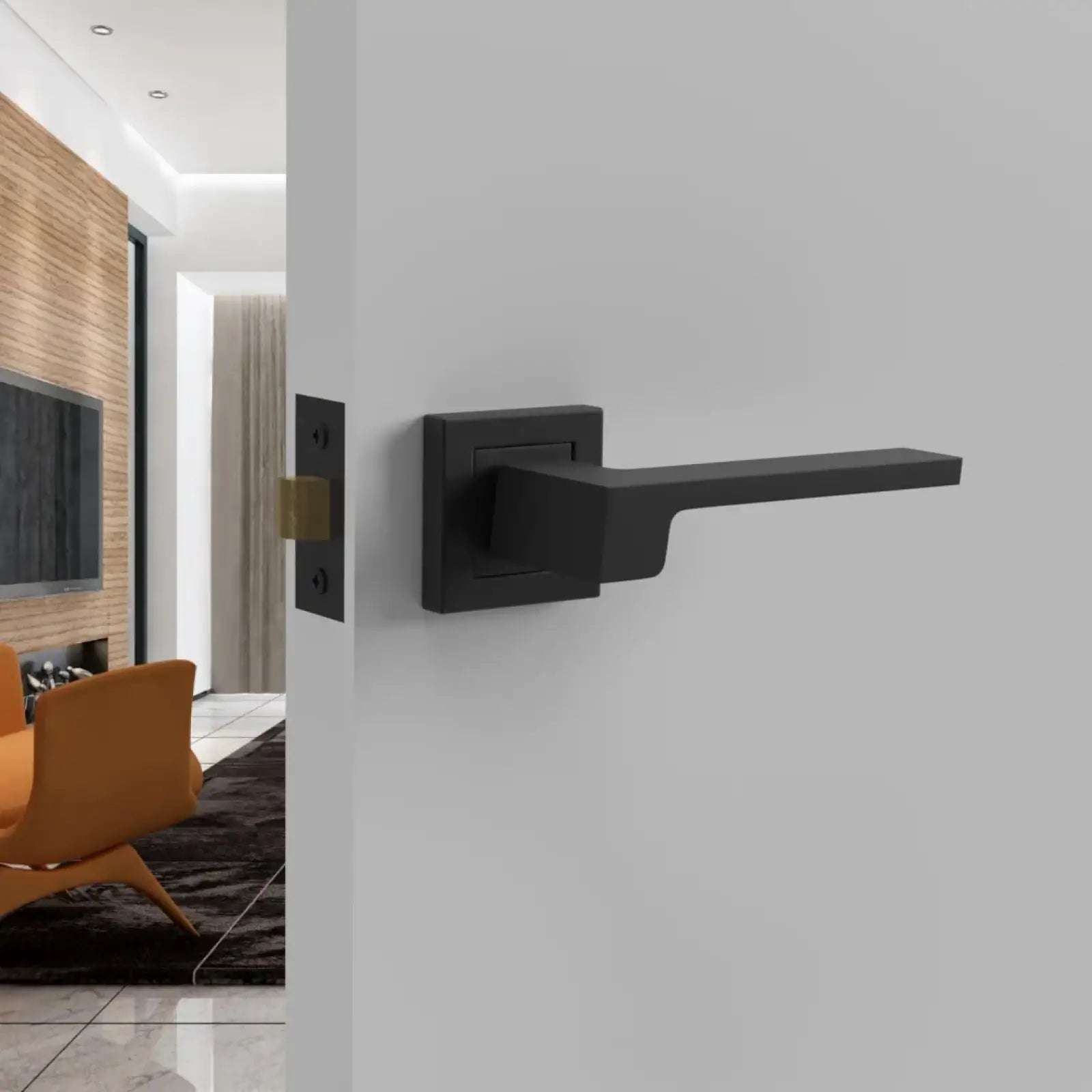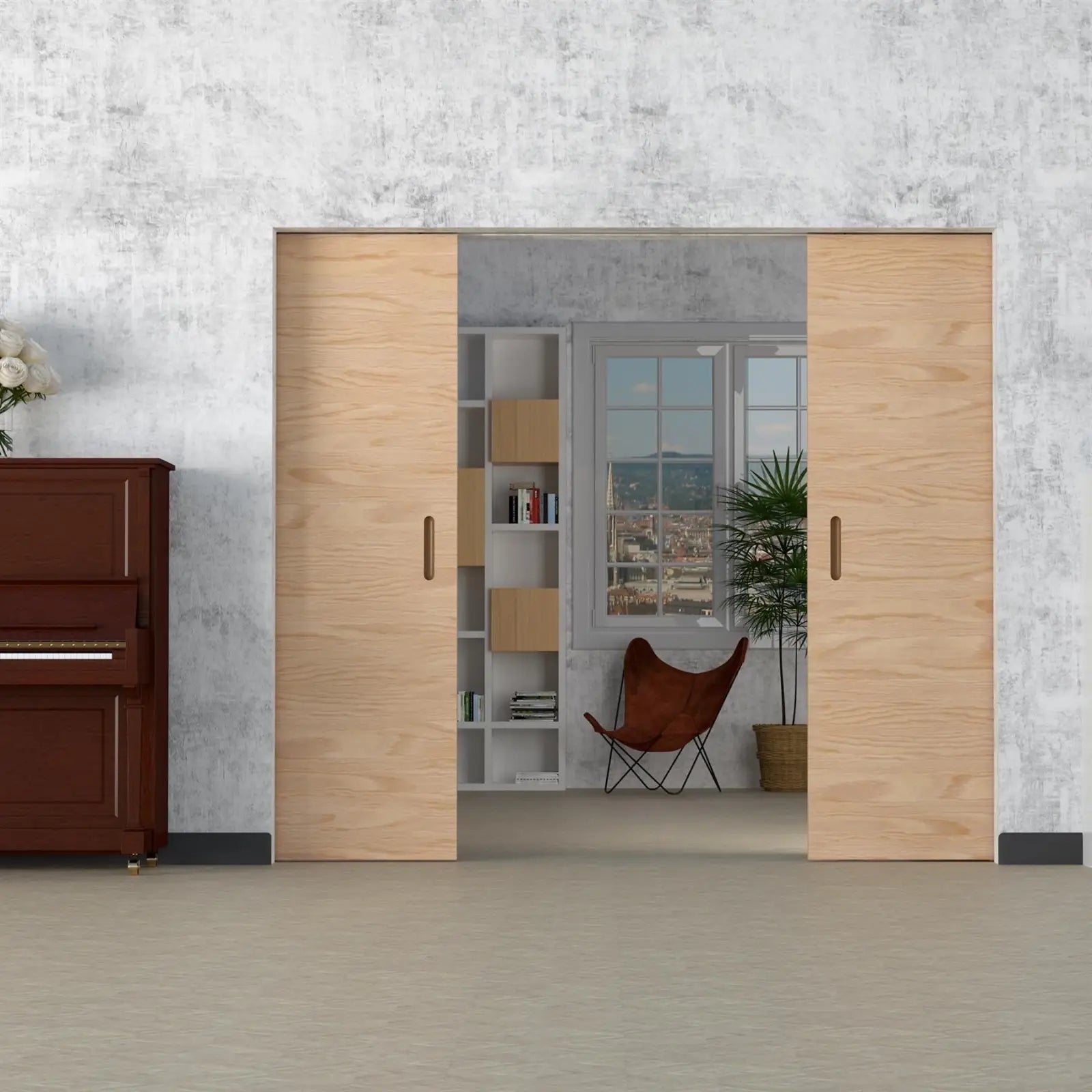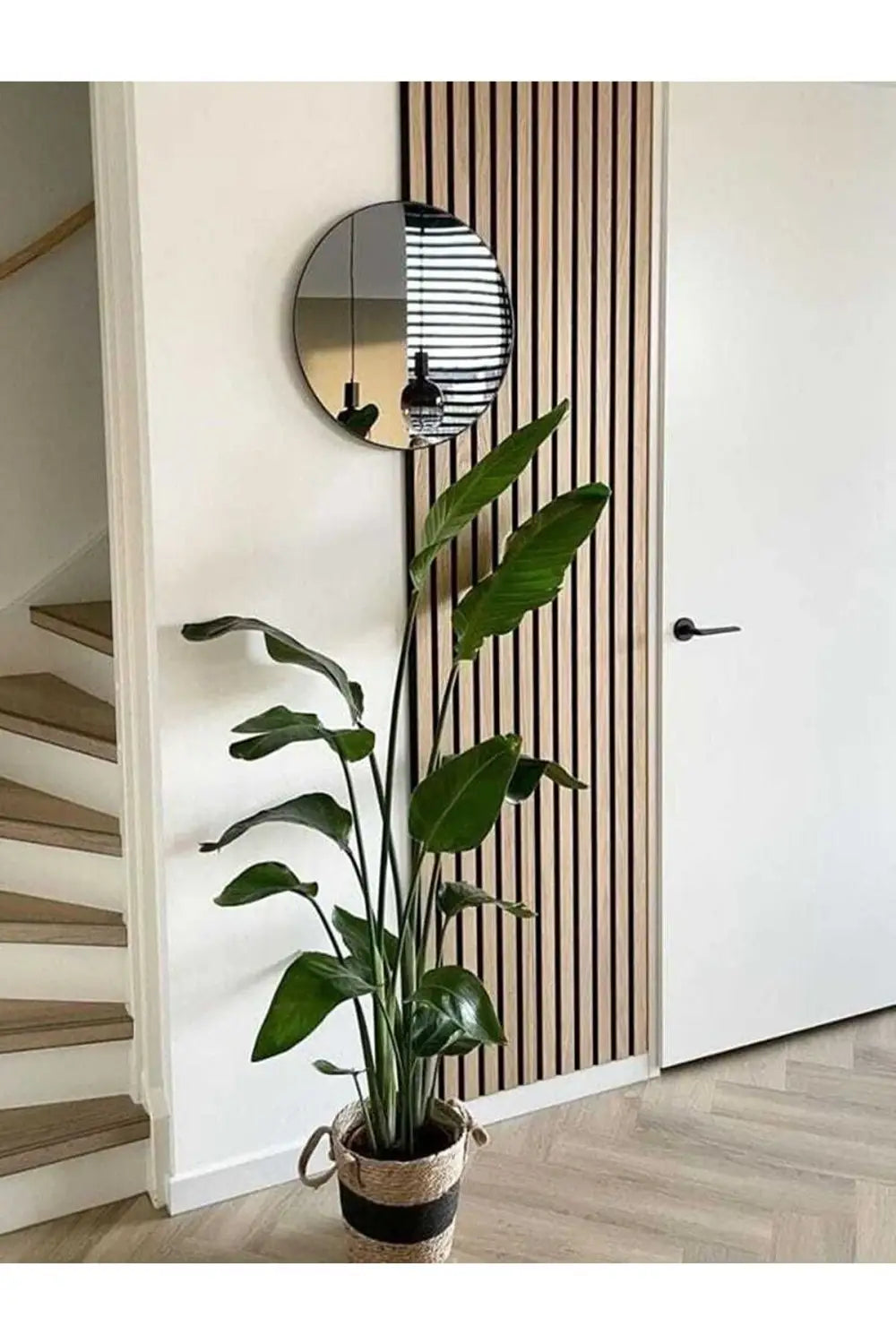Acoustic Panel Solutions for Every Space – 2023 Edition
Imagine sitting in your living room, trying to enjoy your favourite movie, but your neighbours party noise keeps interrupting your experience. Or perhaps you’re in an office setting where constant chatter and echoing sounds make it nearly impossible to concentrate. These are common scenarios where an acoustic panel can come to the rescue. In this blog post, we will explore the importance and various types of acoustic panels, the materials used in their construction, customisation options, and their applications in different settings. Prepare to be enlightened on how these sound-absorbing solutions, like the acoustic panel, can enhance your life.
Short Summary
Acoustic panels are essential for controlling sound absorption, reducing reverberation and improving room acoustics.
Different types of acoustic panels (wall, ceiling & screens) come in a variety of materials such as felt, recycled plastic and mineral wool to suit any space.
Acoustic panel applications include residential spaces, offices and entertainment venues for improved sound quality & aesthetic appeal.
The Importance of Acoustic Panels
Acoustic panels play a critical role in controlling sound absorption, reducing reverberation, and improving overall room acoustics in various environments. They are designed to diminish reverberation and echo in a space, thus enhancing speech intelligibility, diminishing noise levels, and creating a more pleasant and comfortable atmosphere. Acupanel, a sophisticated acoustic slat wood wall panelling solution, is one such product that not only provides outstanding acoustic dampening capabilities but also adds an attractive aesthetic to any space.
Integrating acoustic panels into workspace design can greatly improve the working environment by addressing poor acoustics and noise levels. This ultimately leads to a more productive and pleasant atmosphere for employees. Acoustic panels are not limited to office spaces; they can also be used to shield your home from noisy neighbours, making your home a peaceful sanctuary.
Absorb Sound
Acoustic panels serve to absorb sound, thereby reducing noise pollution and improving sound quality. They work by trapping sound waves within the material they are composed of, which prevents them from propagating further and causing disturbances. Various materials can be used to construct acoustic panels, each offering unique benefits. For example, acoustic felt is composed of recycled plastic and provides excellent sound absorption.
In a workspace, acoustic panels can be employed to stop sound by forming privacy screens around conference or meeting areas, or to absorb sound in areas adjacent to desks. This helps create a quieter and more focused environment for employees, allowing them to be more productive and efficient.
By incorporating acoustic panels into your home or office design, you are taking a significant step towards enhancing your overall quality of life.
Reduce Reverberation
Reverberation is the continued presence of sound in a particular space even after the initial sound has ceased. Acoustic panels are utilized to absorb sound waves, thus decreasing the reverberation time and creating a more comfortable atmosphere. By reducing reverberation, acoustic panels enhance speech intelligibility, diminish noise levels, and create a more pleasant and comfortable environment.
This is particularly important in spaces such as meeting rooms or lively restaurants, where clear communication and a pleasant ambiance are crucial for success.
Improve Room Acoustics
Properly installed acoustic panels can significantly improve the overall acoustics of a room, enhancing speech clarity and reducing noise levels. In open-plan offices, employing acoustic panels can lead to a decrease in sound levels and an increase in speech clarity, creating a more productive and pleasant work environment. This allows employees to focus on their tasks without being constantly distracted by background noise and chatter.
Acoustic screens, another type of acoustic panel, can be used to create a sense of privacy and sound dampening in large, open spaces. They are easily customizable and can be moved around with relative ease. This flexibility makes them an ideal choice for open office spaces, where the layout may change frequently or where temporary solutions are needed for special events or projects.
Types of Acoustic Panels
Acoustic panels come in various types, including acoustic panels, acoustic wall panels, ceiling panels, and acoustic screens, each designed to address specific acoustic needs. Wall panels are a popular choice for controlling sound and enhancing room aesthetics, while ceiling panels offer additional sound absorption and can be customized to fit any space. Acoustic screens provide flexible, portable solutions for managing sound in open spaces, allowing for easy reconfiguration and adaptation to changing environments.
Understanding the different types of acoustic panels and their unique benefits can help you make an informed decision when selecting the right solution for your space. Whether you’re looking to improve the acoustics in your home, office, or entertainment venue, there’s an acoustic panel designed to suit your needs.
Wall Panels
Wall panels are a widely used option for sound control and aesthetic enhancement. They are capable of absorbing sound, diminishing reverberation, and optimizing room acoustics, making them an ideal choice for various settings, such as home theaters, offices, and restaurants. Acupanel® is a popular choice for wall panels, offering class A sound absorption, an attractive aesthetic, easy installation, and a cost-effective solution. The Acupanel® Colour range provides a modern-looking wood veneer finish with excellent acoustic properties, making it an ideal option for those looking for both form and function.
There are several types of wall panels available on the market, including hanging acoustic panels, stretched systems, and textured wall panels. Each type offers unique benefits and can be customized to fit your space and design preferences. By selecting the right wall panels for your needs, you can create an environment that is both visually appealing and acoustically optimized.
Ceiling Panels
Ceiling panels are acoustic panels designed to absorb sound waves rather than reflect them, thus aiding in the control and improvement of the acoustics of a room. They are composed of foam materials that trap sound waves, diminishing background noise and echoes by managing reverberation. Ceiling panels can effectively reduce noise levels, enhance sound clarity, and create a more pleasant atmosphere. Additionally, they can decrease reverberation, which can create an illusion of a larger space and minimize distractions.
Ceiling panels are available in a range of shapes, sizes, and materials and can be tailored to fit any space. They are typically constructed with foam, fabric, wood, or metal and can be affixed directly to the ceiling or suspended from it. Materials such as acoustic felt, recycled plastic, and mineral wool are commonly used in ceiling panels, each offering distinct characteristics and advantages. By selecting the appropriate ceiling panels for your space, you can achieve the desired level of sound absorption and create a comfortable environment for work or relaxation.
Acoustic Screens
Acoustic screens are decorative panels that provide a degree of privacy and sound dampening. They are an aesthetically pleasing way to divide work spaces while also decreasing the spread of sound throughout an open plan space. Acoustic screens offer a flexible solution for managing sound in large, open areas where walls or ceiling panels may not be feasible or desired.
They are easily customizable and can be moved around with relative ease, making them an ideal choice for open office spaces or temporary event setups where panels directly contribute to the flexibility of the space.
Material Choices for Acoustic Panels
Acoustic panels can be made from various materials, such as acoustic felt, recycled plastic, and mineral wool, each offering unique benefits and aesthetics. The choice of material depends on factors such as the desired level of sound absorption, budget, and design preferences.
In the following sections, we will explore the characteristics and advantages of these highest quality materials in more detail, helping you make an informed decision when selecting the right acoustic panels for your space.
Acoustic Felt
Acoustic felt is a material composed of densely packed fibers that is utilized to absorb and reflect sound waves. It functions by absorbing and reflecting sound waves, thus diminishing noise levels and controlling reverberation. Acoustic felt offers numerous advantages, such as improved sound quality, increased privacy, and enhanced aesthetics. Additionally, it is an eco-friendly option, as it is composed of recycled materials.
Acoustic felt can be employed in a variety of settings, such as home theaters, recording studios, offices, and other areas where sound quality and confidentiality are of importance. Its versatility and eco-friendly properties make it a popular choice for those seeking an effective and sustainable acoustic solution.
Recycled Plastic
Recycled plastic panels are a sustainable option that offers both sound absorption and durability. Created by collecting, sorting, washing, shredding, and reprocessing plastic material, recycled plastic is an environmentally-friendly choice for acoustic panels. While working with recycled plastic can sometimes be more challenging than other materials, and its appearance may not be as pleasing as other alternatives, its eco-friendly nature and sound absorption capabilities make it a viable option for those seeking a green solution to their acoustic needs.
Mineral Wool
Mineral wool panels provide superior sound absorption and fire resistance. They are an effective acoustic insulation material that absorbs airborne sound and reduces sound energy, thus diminishing the noise reverberating within the cavity and amplifying. Mineral wool is a lightweight and non-combustible material that is straightforward to install and offers excellent thermal insulation.
It is resistant to mold and mildew and is an ecologically friendly material. Mineral wool is widely utilized in a variety of applications, such as soundproofing walls and ceilings, insulating pipes and ducts, and providing fire protection.
Customizing Acoustic Solutions
Customising acoustic solutions involves assessing your space, choosing the right panels, and selecting the best installation options for your needs. By taking the time to evaluate your space and its specific acoustic requirements, you can tailor your acoustic solutions to meet your unique needs and preferences.
In the following sections, we will explore the steps involved in customising acoustic solutions in more detail.
Assessing Your Space
A thorough assessment of your space helps determine the most effective acoustic solutions. This involves measuring the room size, determining the type of sound to be absorbed or reduced, and assessing the existing acoustic conditions. By understanding the specific acoustic needs of your space, you can select the appropriate materials and placement of acoustic panels to create the most effective sound-absorbing environment.
In order to evaluate the acoustic environment, it is recommended to use a sound level meter with a microphone to measure the acoustics of the room, as well as to perform impulse response testing. This information can help guide your decision-making process when selecting the right acoustic panels and materials for your space.
Choosing the Right Panels
Choosing the right panels involves considering factors such as aesthetics, functionality, and budget. It is essential to take into account the NRC rating, the size and shape of the room, the type of sound to be absorbed or diffused, and the quality and performance of the panels. By carefully considering these factors, you can select the most appropriate acoustic panels for your specific needs and preferences.
When selecting the appropriate acoustic panels, factors to consider include the type of sound to be absorbed or reduced, assessing the current acoustic conditions, and selecting the right materials, such as recycled polyester fibers and printed acoustic panels. By carefully evaluating your space and its specific needs, you can ensure that the acoustic panels you choose will provide the most effective solution.
Installation Options
Installation options for acoustic panels range from DIY to professional services, depending on your preferences and requirements. DIY installation involves using adhesive glues or adjustable wire hangers to suspend the acoustic solutions from the ceiling, or utilising a mounting kit, drill, level, measuring tape, and painter’s tape to install them on the wall.
Professional installation, on the other hand, involves enlisting the services of a professional to install the acoustic solutions, ensuring that the installation is carried out correctly and safely. Regardless of your chosen installation method, proper installation is crucial for optimal acoustic panel performance.
Acoustic Panel Applications
Acoustic panels, a type of acoustic products, have various applications, including home use, office spaces, and hospitality and entertainment venues. They can be used to improve the sound quality in living spaces, home theaters, and music rooms, as well as reduce noise distractions and enhance productivity in office spaces.
In hospitality and entertainment venues, acoustic panels can create comfortable environments and improve overall guest experiences by reducing noise levels and eliminating reverberations. In the following sections, we will explore these applications in more detail.
Home Use
Home use of acoustic panels can improve sound quality in living spaces, home theaters, and music rooms. By absorbing or diffusing sound from the first point of reflection, acoustic panels can reduce the noise traveling throughout open spaces, making your home a peaceful sanctuary. This is particularly beneficial for those with hearing impairments or difficulties, as it can help create a more comfortable and enjoyable living environment.
In addition to enhancing sound quality, acoustic panels can also add an aesthetically pleasing element to your home design. With a variety of styles and materials available, you can find the perfect acoustic panels to complement your home décor and create a visually appealing, acoustically optimised space.
Office Spaces
Office spaces benefit from acoustic panels by reducing noise distractions and enhancing productivity. Acoustic panels can be utilised in various ways within an office space, such as mounted on walls or ceilings, employed as acoustic screens to divide workplace areas, or situated in corners of a room or along any reflective surfaces. For optimal sound absorption, it is recommended to place them near face level throughout the office.
By implementing acoustic panels in office spaces, you can create a more focused and productive work environment for employees. This ultimately leads to increased job satisfaction and a more pleasant atmosphere for everyone in the office.
Hospitality and Entertainment
Hospitality and entertainment venues can use acoustic panels to create comfortable environments and improve overall guest experiences. By reducing noise levels and eliminating reverberations, acoustic panels can contribute to a more positive guest experience and make the space more enjoyable. This is particularly important in spaces such as restaurants, bars, and music venues, where clear communication and a pleasant ambiance are crucial for success.
Acoustic panels can be employed in a variety of ways within hospitality and entertainment venues, such as installed on the ceiling or vertically, and tailored to meet the specific requirements of the area. By selecting the appropriate acoustic panels for your venue, you can create a welcoming, comfortable environment that encourages guests to return time and time again.
Summary
In conclusion, acoustic panels are an essential component in creating comfortable, acoustically optimised spaces in homes, offices, and hospitality and entertainment venues. By understanding the various types of panels, materials, and customisation options available, you can make an informed decision when selecting the right acoustic solutions for your space. Whether you’re looking to improve sound quality in your home theater, enhance productivity in an office, or create a welcoming atmosphere in a restaurant, acoustic panels offer the perfect solution for managing sound and creating a pleasant environment for all.
Frequently Asked Questions
Do acoustic panels really work?
Acoustic panels have been proven to effectively reduce noise levels in homes by absorbing sound waves. By adding absorption to walls and ceilings, the overall noise level will be significantly decreased.
What is the point of acoustic panels?
Acoustic panels reduce noise levels and eliminate echoes in a room, by absorbing sound waves and preventing them from reflecting off of hard surfaces.
This can help to create a more pleasant environment.
Do acoustic slat panels work?
Acoustic slat panels have been proven to reduce environmental noise and reverberation, offering both sound quality improvement and decorative value. Thus, they are effective at improving productivity and sound intelligibility.
Do acoustic wood panels absorb sound?
Acoustic wood panels absorb sound by breaking and absorbing the sound waves as they hit the felt and lamellas.
What are the main benefits of using acoustic panels?
Acoustic panels can help reduce reverberation and improve overall room acoustics, providing a better acoustic experience for listeners.





